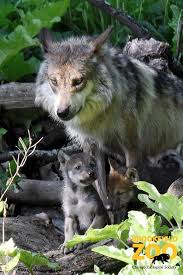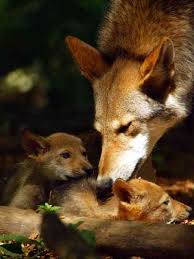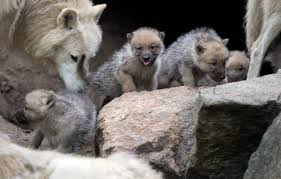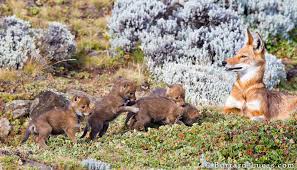
Wolves normally mate for life. In the northern part of the United States, they breed from late January to March. For wolves farther in the south, the breeding season is earlier. The female carries the pups for about 63 days and when they are born they cannot see or hear and they weigh about one pound. There is a birth of about four to six pups and they are usually born in den. The mother moves her pups to a new den site every couple of months until the fall when they stop living in dens. The pups are weaned at about six weeks and then adult pack members swallow meat and bring it back to the den where they regurgitate it for their offspring to eat.

Red wolves mate once a year, January through March. Anywhere from 1-9 pups are born within roughly 9 weeks in April or May. After about 10 days the pup�s eyes open. For several weeks after the other members of the pack keep a close eye on the pups, keeping them within the range of the den until they mature.

As is the case with most species of wolves, only the alpha male and the beta female will be allowed to mate. That the main reason why younger wolves around two years of age head out on their own. The urge to mate is very common and it will encourage them to make their own pack.
The pups are born a couple of months after mating and the female will start to find a place where she can conceive. Often she will spend a great deal of time digging in the layers of ice to make a den. Sometimes it will prove to be too difficult a task so she is then forced to find a den that is already in place, rocks, or even a cave where she can give birth to her pups.
It is very important that the pups are born in a safe place because she can have up to twelve of them at once. They are about one pound when they are born and they can�t hear or see so they rely upon instinct and smell to survive in the care of their mother.
She will need to leave them from time to time so she can go get food for herself. This can leave the young pups very vulnerable at that time. When they are about three months old they will join the rest of the pack. The entire pack will help keep the pups safe and ensure their survival.

It is estimated that more then half of all conceptions are from a male that is outside of the pack. The female will give birth to about six young at a time. This is one of the few species of wolves where pairs other that the alpha male and beta female are allowed to mate.
Grey Wolf Breeding Info